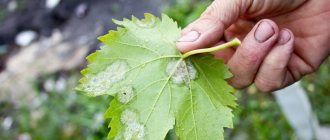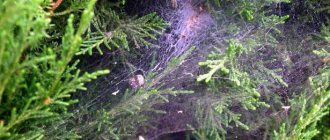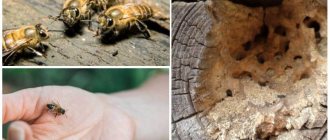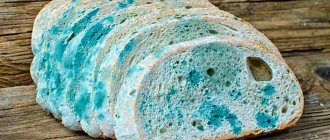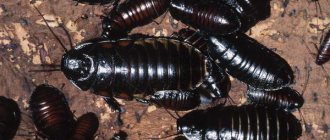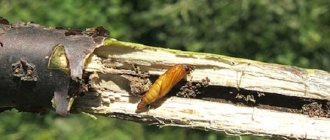0
1152
Article rating
If a cobweb has appeared on your apple tree - dense, sticky, entangling the delicate leaves, and inside it there are disgusting caterpillars that are constantly gnawing everything - buds, leaves, buds and ovaries, there is no need to despair. Timely measures will help preserve the harvest and save the tree from death. Let's look at the main ways of fighting.
Reasons for the appearance of cobwebsa3-600×450.jpg 600w, https://pro100ogorod.ru/wp-content/uploads/2019/08/pautina3-90×68.jpg 90w, https://pro100ogorod.ru/wp-content/ uploads/2019/08/pautina3-300×225.jpg 300w" sizes="(max-width: 600px) 100vw, 600px" /> Spider web on apple trees
What diseases and pests cause spider webs?
If you see gray-yellow caterpillars in a thick, massive, dense web, you have codling moth.
If you notice a white, dense web all over the tree, it's an apple worm . Its larvae suck the juices out of the plant, and then secrete a sticky substance that glues the buds, foliage, and buds together, resulting in the formation of a sooty fungus, which we see as a white cobweb.
If you find clearly visible cocoons on apple trees , you will understand that the trees have been affected by hawthorn. These are small caterpillars that curl up and overwinter in cocoons.
But when a spider mite appears, you will see a web in the form of transparent cloudy films with many black very small dots - these are eggs.
Apple (ermine) moth
Since this pest also flies, it can appear anytime and anywhere. Its caterpillars create a thick, dense and quite strong web, like that of a silkworm, inside which the insect goes through the “pupa” stage, so that later, when it comes out, it begins to actively spread throughout gardens and flower beds, causing devastation. Such cocoons with caterpillars can be either “for one person” or “mass dormitories”.
Apple tree in a web: what to do with spider moths?
This is a small snow-white butterfly ; it lays many eggs in the form of scutes, choosing young branches and protected places: on the forks of branches, at the base of the buds. Caterpillars spend the winter under the egg shells. In early spring they chew off the buds and then eat the leaves.
The leaves dry, and the caterpillars create a web in which 20-70 of them live. Afterwards they form pupae, and at the beginning of summer butterflies emerge from them and again lay up to 100 eggs under the scutes.
In the fall, take a magnifying glass and examine the young branches of the apple tree. If you see egg scales, scrape them off and burn them, cut off damaged and dry branches and burn them, and before winter, spray the apple tree with milk of lime.
In early spring, cut and burn the scutes. When the buds begin to bloom, and before the buds grow and separate, spray the trees with: a solution of 2 ml Decis per bucket of water or a composition of 4 ml Fitoverm per bucket of water, a solution of 10 ml Kinmiks per bucket of water, a solution of 10 ml Kemifos per bucket of water .
You can use the product by diluting 1 Inta-Vir tablet in a bucket of water .
If there are a very large number of insects, then treat the apple trees with a solution of 10 ml of fufanon per bucket of water.
How to treat an apple tree against leaf roller caterpillars
Green caterpillars emerge from the eggs of leaf roller butterflies. They love apple buds when they are still young, then they switch to flowers, and then to leaves. The waste products of leaf roller caterpillars look like cobwebs. Under its influence, the leaves curl into tubes, inside which the caterpillar lives.
How to deal with apple tree pests? Mechanically. Tear off all curled leaves and burn. If in the spring there are too many of these pests on the tree, then before flowering, spray the apple tree with a 3% solution of nitrafen. Repeated treatment can be done no earlier than two weeks later.
If there are caterpillars in the web (black, gray, green)?
- If you find almost black caterpillars in the web, with bluish stripes on the back, this is a ringed silkworm . They sit motionless all day, and at night they feed heavily on leaves and flowers.
To repel caterpillars, use tinctures of wormwood or milkweed, spraying apple trees before the buds open. You can use “Lepidocid” and “Bitoxibacillin”, but they can only be used at temperatures above +15°C.
- Let's say you notice green caterpillars on a tree in a web; these are winter moths . Each caterpillar has one dark and 3 light stripes on its sides. These caterpillars crawl inside the buds and eat them, and in later spring they feed on foliage and flowers. To catch caterpillars in the fall, put fishing belts on the trunks.
- If you see gray caterpillars in a web that are covered with hairs coming from tufts, these are gypsy moths . They are easily carried by the wind from tree to tree.
Advice. In the spring, carefully examine all the trunks; if you see masonry, scrape them off with a knife and treat them with kerosene.
Prevention
To prevent pest infestations:
- pull out the weed;
- cut off the basal shoots;
- avoid close proximity to cruciferous plants and flowers;
- fertilize;
- attract ladybugs with caraway seeds, dill, parsley;
- pruning the apple tree before the growing season;
- treat wounds.
When pests appear, you can use biological products:
- "Bitoxibacillin";
- "Verticillin";
- "Entobacterin";
- "Dendrobacillin".
If there is a cobweb on a young apple tree
If you see a web on a young apple tree, it could be an apple psyllid . These are quite small insects, up to 3 mm in size. They lay yellowish-orange eggs for the winter, placing them in inconspicuous places, in folds of bark and ringlets.
Larvae hatch from the eggs in the spring, they suck the juice from the buds and secrete excrement - these are sticky balls that blur, and all parts of the apple tree become shrouded in honeydew, and sooty fungus settles on it .
This causes the foliage and flowers to turn black and then dry out. When the apple tree fades, the larvae grow to adult green psyllids with transparent wings; they lay eggs again at the end of summer.
To eliminate the larvae, when the growing season has already begun, sprinkle the crop with an infusion of ash, yarrow, tobacco, a solution of soap, and shag.
To kill adult insects, you can fumigate apple trees with tobacco smoke.
Make piles of straw, sprinkle 2 kg of tobacco dust on each, let the piles burn for 2 hours, then the copperheads will fall to the ground. Dig up the soil immediately before the insects wake up.
Also read about other ways to care for an apple tree, such as whitewashing and tying up fruit trees.
Pest varieties
There are many types of this pest and we will give a description of the most common of them, and also show what a spider mite looks like on an apple tree: photos are given below.
Red fruit mite
Polyphagous, up to 0.4 mm long, so they can only be identified with a magnifying glass. The body of the tick is oval-shaped, reddish in color. Externally, red fruit mite damage appears as light yellow spots along the veins on the leaves, which then darken and die.
Red fruit mite.
Brown fruit mite
Adult insects are up to 0.6 mm long, the body is flat, brown in color. They suck out the juice from both the buds and the leaves, which is why they acquire a reddish or dirty gray tint, dry out and fall off. Mite larvae molt, leaving silvery marks from their skins on the bark in the moulting areas.
Gall mite
It lives secretly, inside the tissues of leaves and buds, has an even smaller size of up to 0.25 mm, the body is elongated, white, oval, tapering at the back. Galls are formed on the surfaces of the leaves - spherical swellings of yellow or dark brown color. Due to damage by gall mites, the leaves turn black, dry out and die.
Gall mite and leaf damaged by it.
Kidney mite
The most dangerous mite that destroys young shoots. A diseased bud cannot grow and either does not produce shoots or produces diseased ones. The main sign of damage by these insects is large deformed buds.
Schlechtendahl tick
A less common pest of apple trees. It is 0.2 mm long and yellow-brown in color. The females of this tick species are very fertile and can lay up to 2 million eggs in their lifetime. Due to the active feeding of insects, photosynthesis processes stop and leaves fall off.
What to do if you see red bugs?
Possibly a red spider mite . Females are 0.5 mm long and have a purple tint, bright scarlet males are even smaller - 0.3 mm.
The appearance of a tick can be noticed:
- If there are cream, scarlet or silver spots on the leaves.
- On the back of the leaves there are slightly noticeable white spots - these are mite larvae.
- If a small cobweb appears on the leaves of the apple tree.
To kill insects, spray the apple tree with bicol and verticillin.
What to do if there are spider mites in the leaves?
In addition to the red spider mite, there are many types of mites of different colors. Ticks drink the sap, so by July half of the leaves have fallen from the tree.
You can spray the apple tree with tobacco infusion. Pour 1 kg of tobacco dust into a container and pour in a bucket of water.
Then strain and pour in another 10 liters. Then add 50 g of grated laundry soap so that the solution sticks to the surface of the leaves. Apply the composition 2 times at intervals of a week.
Dry 1 kg of chamomile flowers, pour into a bucket of water and leave for 10 hours. Then strain and spray with the composition 2 times again at intervals of a week. If there are a lot of flares, then you will have to use chemicals.
Important! Nitrofen is also used, but this is a very strong poison; it cannot be used closer than 200 m from a living space. But spider mites can be killed with bioinsecticides; they are the safest to use compared to chemicals, these are bitoxybacillin and bicol.
We must not forget about prevention: collect fallen leaves, cut off branches, burn them, clean off old bark with metal brushes and burn it.
Fighting methods
Pesticide
The insect can destroy the future harvest
In the fight against the parasite, insecticidal and acaricidal spectrum agents, which contain harmful active substances, are effective.
The drugs are produced in the form of emulsions, suspensions and powders.
Insecticides
Fufanon is used. The active substance is malathion. It is fast-acting, causing inhibition of insect activity 2 hours after treatment.
Complete death of ticks occurs 24 hours after spraying. Affects adults and tick larvae. Frequency of use – up to 2 times per season.
Trees are treated with solutions based on insecticidal preparations by spraying. They are complex in nature and help not only in the fight against tick-borne species, but are also effective against a number of other harmful insects - scale insects, flower beetles, weevils, codling moths, leaf rollers, etc.
Acaricides
Directional means. They are harmful only to tick-borne parasites. The mechanism of action is contact-intestinal. They have long-lasting protective properties, preventing the reappearance of the pest for 3 weeks. The main active substance is propargite.
The least toxic are Apollo and Omite.
Biological agents
The use of such preparations helps reduce the toxic effect on fruit crops and at the same time protect apple trees from attack by pests. Biological products are based on waste products from fungi that are harmful to ticks.
Unlike pesticides, which lose their properties at high ambient temperatures, biological ones are activated at 18°C, increasing intensity at 25°C and above. In addition, you can spray apple trees 2-3 times a season.
| Advantages | Flaws |
| Short waiting period, up to 2 days: you can cultivate the garden almost until harvest. | Detrimental effect only on adults, without destroying larvae and eggs. A number of drugs have toxic properties towards aquatic organisms and fish, and they should be used sparingly away from bodies of water; They are capable of causing resistance (stability), therefore it is recommended to alternate different groups during the treatment process. |
Agricultural technology
Agricultural technology will help get rid of the tick colony on the apple tree. Mandatory activities include:
- autumn plowing of the land;
- destruction of weeds;
- pruning damaged branches.
The collected fallen leaves in the fall must be burned, because... it serves as a wintering place for the eggs laid by the female.
Traditional methods
For processing, you can use folk remedies
- Garlic. The crushed slices (about 50 g) are poured with water (10 l), for better adhesion, laundry soap (50 g) is added and the trees are sprayed from top to bottom along the foliage.
- Tar soap. 100 g per 10 liters of water. The garden is treated with the solution every 7 days.
- Onion. An infusion of onion peels (200 g) and water (10 l) is kept for 60 minutes, filtered and used for spraying.
- Horseradish. Chopped vegetables (400 g) are infused in 10 liters of water for 2-3 hours and sprayed on the affected apple trees.
- Henbane. A poisonous plant (2 kg) is boiled in water for several hours. The amount of decoction is adjusted to a volume of 10 liters.
- Vinegar. Apple cider vinegar (1 tbsp) is diluted with water (1 l) and sprayed on the trees.
What to do if there are spider aphids in the leaves?
This means that you have two types of insects at the same time : spider mites and aphids .
Aphids reproduce very intensively. Females lay up to 100 larvae at a time. There are several species of aphids, different in color; they suck juice from leaves, branches, and apples using a proboscis.
Then the foliage curls and falls off. In spring, small larvae emerge from aphid eggs. By the end of spring they grow.
Green aphids prefer to breed on young apple trees. Aphids leave a black coating on the tree; it is called sooty fungus. During a season, a female can give birth to up to 10-11 generations. By winter, green aphids lay eggs at the base of the buds.
In summer, apple trees can be treated with tobacco infusion.
Gray aphids prefer mature apple trees. At the same time, the foliage swells, changes color, and then the leaves curl and dry. It is safest to use bioinsecticides, such as verticillin.
For the drug to have a successful effect, the temperature should be +22-240C for 2 days. For spraying, dilute 100-500 ml of verticillin per bucket of water (10 l). Bitoxibacillin and bicol quickly destroy aphids.
After spraying, be sure to clean off the top bark and then paint the tree with whitewash. Then attach hunting belts made of straw or thick paper to the trunk. Aphids usually lay eggs in them, so remove the traps and burn them in late fall.
Causes of cobwebs
The web covers leaves, branches, the entire crown. Its size and density will help determine the type of pest. The tree can suffer from these types:
- spider moth;
- spider mite;
- caterpillars;
- worms;
- aphids.
During the life of such pests, the tree becomes covered with a thin web. Such a grid can be uniform or tangled, extending from one branch or scattered in a chaotic manner. This problem cannot be solved only mechanically. If the root cause is not eliminated, it will not be possible to save the garden crop.
Spider moth
A white butterfly is called a spider moth. During her life, she lays hundreds of eggs. A good habitat for the pest is green branches of young trees. It is attached near the kidneys. Until the moth begins to multiply, spreading webs, the pest cannot be noticed.
In winter, he sleeps and is in a kind of suspended animation. Activates during the warm season. In the spring, it gnaws off young buds and only then moves on to green leaves.
As a result of such an attack, the foliage begins to dry out quickly. The web created on top of the branches serves as a kind of frame for the parasites: up to 70 new cocoons are attached to it. The larvae grow into pupae.
Only at this stage of development can a gardener see the pest. The butterfly, hatched from the cocoon, begins to actively lay eggs and feed. The process of destroying the apple tree continues.
Moth detection method
To prevent the danger of moth breeding, the gardener inspects the tree in the fall. A magnifying glass will be useful for this. Inspect the branches: scutes may stand out on them - the first sign that the moth lives on the tree.
If prevention has allowed the parasite to be detected, radical measures are needed. All dry branches are cut and burned. Before winter, to prevent the pest from hiding in the tree bark, it is sprayed with a concentrated solution of lime.
In the spring, before the first buds appear, the tree is inspected again. If necessary, cut off the shields and dry branches again. For prevention against moths, a special spraying agent is used: mix 2 ml of Decis and a bucket of purified water.
Caterpillars
If the apple tree is covered with cobwebs, it needs to be examined for the presence of cocoons. The color and shape of such formations will allow you to identify the type of parasite.
Caterpillars often infect apple and pear trees that grow in a large garden. Black, gray and green parasites threaten garden crops. Black caterpillars with blue stripes have a beautiful name - silkworms. During the day they are motionless, and at night they begin to feed - they eat the leaves of the tree.
Caterpillars cause irreparable damage to trees
Green caterpillars are called moths. This parasite has characteristic light stripes on its sides. They first feed on the kidneys. When the latter are destroyed, the caterpillars move to the leaves.
Gradually, a large group of these pests destroys the entire tree. To prevent the appearance of green larvae, in the fall, before the arrival of frost, hunting belts are put on the tree.
Gray caterpillars have characteristic hairs on their bodies. Gypsy moths, as they are also called, easily move from one crop to another. If pests appear on an apple tree, there is a high probability that they spread to it from another tree in the garden.
It is necessary to inspect all garden crops. If a gardener notices “masonry” in the spring, they need to be completely removed - scraped off with a knife.
Worms
Worms living under the web, which are smaller in size than caterpillars, are codling moths.
First, the butterfly lays eggs. They are located on the back side of the sheet plate and are very difficult to notice. After two weeks, caterpillars emerge from them. Their length is no more than 20 mm. A distinctive feature of pests is that a dark head stands out against the background of a light body.
In the spring, the worms feed on the buds and buds of the apple tree. After this, pupae appear - their diameter is no more than 10 mm. Then the parasite's life cycle repeats. If there are a large number of such worms, the apple tree may die.
leaf roller
Another type of worm that causes leaves to shrink into tubes is the leaf roller. It not only creates a small web, but also completely deforms the leaf plate.
The pest differs in the location of its wings: while other moths have vertical wings, the leaf roller has them horizontal. The color of the butterfly is gray, sometimes white. The average length of the wings is 20 mm.
If you see a leaf roller, you need to take the following measures:
- first aid - mechanical removal of cocoons;
- the caterpillars are shaken off and burned;
- They use chemicals to treat the entire tree.
psyllid
A similar pest grows on a seedling. It rarely produces thick webs, but destroys foliage. Psyllids are small insects. Their body size does not exceed 3 mm. They lay yellow eggs on the bark or near the first buds.
The eggs are stored in the bark until the ambient temperature rises. After this, larvae emerge from them. Pests at this stage of development feed on tree sap.
During their life, psyllids leave excrement: these are white spots that can be seen on a young apple tree. If the garden crop is not treated, a fungus appears on them.
Psyllids can destroy foliage
Over time, the foliage darkens. Then the leaf plate dries out and falls off. Adults from the larvae appear after the apple tree blooms. They develop transparent wings. By late summer, adults lay eggs, and in the spring their life cycle repeats. To prevent the proliferation of parasites, after winter, young trees are sprayed with an infusion of ash.
Spider mite
If a thick web appears on the seedlings, the pest is a mite. The insect is small in size, so it cannot be seen with the naked eye. First, the pest lays eggs on seedlings, from which a mite emerges two weeks later. It lives on stems and feeds on green foliage.
Another type of parasite is the red tick. It has a characteristic purple color. The body is small in size. The female grows up to 0.5 mm in length, and the males grow up to 0.3 mm.
Signs of mite parasitism are creamy spots on the foliage. These are larvae laid by adults. The web that the tick leaves is thin and breaks quickly.
If there is a draft on the plot of land, the parasite larvae from the torn web end up on other trees. The tick is spreading throughout the garden. Prevention against ticks is timely cleaning. Fallen leaves and dry branches are immediately burned, and the old bark is torn off.
Spider aphid
Often, spider aphids appear on a tree where a tick already lives. The second pest multiplies very quickly. The female is capable of laying up to 100 eggs at a time. Parasites feed on juice, leaves, and buds. Aphids can have different colors and differ in the size of adults.
She wraps the foliage in a web, after which the green plates darken, curl and fall off. In spring, new larvae appear. They grow within a month. Adults can move to other trees.
The apple tree is threatened by these types of aphids:
- green. The pest is found on young trees. It leaves behind characteristic black spots - they are visible on the foliage and young stems. The name of the stain is sooty fungus. In one life cycle, the female green aphid produces up to 10 generations of offspring. As soon as it gets cold, she lays eggs and hides them under her buds;
- gray It appears more often on mature apple trees. Due to its activity, the leaves swell, then they lose their color, dry out and fall off.
Other reasons
The leaves of the apple tree borer are affected. This pest also covers a healthy tree with cobwebs. The larvae feed on the sap and secrete a sticky substance - the leaves stick together. Parasites feed on green leaves.
If large cocoons are visible, but there are few cobwebs, then the apple tree has been affected by hawthorn. The caterpillars overwinter on the tree and become active in the spring.
Spider web on an apple tree: how to fight? Photos and pictures
Spider web on an apple tree with caterpillars.
Apple moth.
Spider mite on an apple tree.
Spider aphid on an apple tree.
Bitoxibacillin.
Verticillin.
Consequences of spider mite infestation of apple trees
The difficulty of controlling the pest is that at the early stage of damage to apple trees, this insect is practically undetectable. It reproduces incredibly quickly. A week after laying the eggs, a full-fledged insect is already formed, ready to continue its genus.
Such rapid reproduction of the negligible apple mite leads to the fact that in a short period of time half of the leaves from the apple trees fall off. This, of course, happens if the gardener has abandoned his plot to the mercy of fate or does not have the opportunity to care for it.
The presence of spider mites on apple trees sharply reduces the trees' immunity, and as a result, they begin to get sick. Most often, fungal infections occur under the influence of pests.
If ticks are rampant in the garden, then you can’t even dream of a good harvest of apples.
Folk remedies
- Grate a piece of laundry soap , add water and add ash. Soap forms a white film on the leaves, making it difficult for aphids to bite through the leaves, and the ash makes the leaves taste unpleasant.
- Collect 1 kg of nettle , place in warm water, spray the apple tree with this mixture.
- 1 kg of shag into a bucket of hot water. You can boil for 10-15 minutes, then let the mixture sit for 3 days, then strain the infusion and pour in 2 more buckets of water. Then spray the trees.
- Finely chop 200 g of onion and 200 g of onion peel , add a bucket of warm water. Leave for 6 days. Then strain and spray. Do this no more than 3 times in 6 months. This composition will protect the apple tree from aphids, spider mites, and leaf rollers.
Important! Prevention measures:
- do not forget to pull out the weeds;
- cut off the root shoots;
- do not plant cruciferous vegetables and flowers near apple trees;
- feed the apple trees. Read more about fertilizing apple trees and their timing here;
- ladybugs eat aphids, to attract them plant: parsley, caraway seeds, dill;
- prune apple trees before the growing season;
- treat wounds on trees;
- fill up the hollows.
Attracting birds and insects to the garden that destroy aphids
Some small birds feed on aphids. These are sparrows, tits, morning robins, linnets and some others. In order for them to settle in the garden, in winter and early spring they need to be attracted by feeders and birdhouses. And with the onset of spring warmth, it will take care of not only food, but also water. In European countries, elegant birdbaths are sold that look like sculptural fountains in the garden.
Photo 6. Bird drinkers are best placed next to feeders and birdhouses.
In addition to birds, gardeners have other helpers - these are beneficial insects that eat aphids:
- Ladybugs,
- ground beetles,
- hoverflies,
- earwigs,
- Riders,
- Lacewings,
- Some types of wasps
- Flies are surfids.
To make them appear in the garden, plants are planted whose smell they like - carrots, parsley, celery, lovage, dill.
A good solution is to provide them with wintering in special houses where they can hide from the cold. They are easy to build from scrap materials - scraps of boards, fragments of bricks, tiles, straw, reeds, etc.
Photo 7. A house for beneficial insects made from wood scraps.
Spider webs on apple trees: how to fight and what to spray with?
It is very important to understand where the web came from. If you see a web in the form of a mesh, then it is an apple moth. You need to remove the web manually. Be sure to collect and destroy caterpillars, as well as cocoons.
Then spray all the leaves and branches with tobacco dust infusion, so you can even reach those that are very high.
You can still purchase and use entobacterin and dendrobacillin. If you notice egg scales, they also need to be scraped off and burned, like dry branches. Before winter, spray the trees with lime milk.
It kills many insects on contact, forms a cover over eggs, larvae and pupae, prevents caterpillars from moving along the trunk, insulates the bark in winter, reflects the sun's rays, therefore protecting the apple tree from burns, prevents damage to the trunk by rodents, and feeds the tree with calcium.
Important! In early spring, collect and burn cocoons.
Bitoxibacillin
For various apple tree pests: silkworms, spider moths, aphids, leaf rollers, hawthorn, spider mites, American white butterflies, moths, dilute 40-80 g of bitoxybacillin in a bucket of water, use at a rate of 1 liter per 10 m². Allow a week between treatments.
Bicol
Bicol has also been developed; it is effective against apple moth, aphids, hawthorn, American white butterfly, spider mites, and codling moth. It is sprayed during the growing season, 2 applications are made at intervals of a week, the consumption rate is 0.7 kg per hectare. This drug is used against 80 types of pests.
Verticillin
Verticillin is used against whiteflies, spider mites, and aphids. It is created based on the spores of the fungus Verticillium lecanii. Its effect is that the blastospores of the fungus invade the insect, grow there and affect all organs.
Before use, it is recommended to water the apple tree generously. Before use, verticillin is soaked in water for a day, this will speed up the germination of spores.
Entobacterin
To treat apple trees, add 10 g of entobacterin to 1 liter of water. If you use this bioinsecticide against aphids, add 5 g of the composition per 1 liter of water. Dissolve the composition in water at room temperature 6 hours before use, but not less than an hour.
This composition is used against aphids, moths, golden silkworms and other leaf-eating insects. The preparation contains spores of Cereus bacteria. There are approximately 30 billion spores in 1 g of entobacterin.
When sprayed, spores eliminate up to 97% of pests and do not harm beneficial insects. After spraying, entobacterin affects pests for about 1.5 weeks.
Then its effectiveness gradually decreases, and after a month it is zero. Therefore, it is allowed to repeat spraying. But it is recommended to do no more than 2 treatments per season.
The composition works best against pests at an air temperature of +20-30 degrees. At temperatures below 14 degrees, in rainy weather, and even on the first day after it has rained, it is not recommended to use the drug.
Dendrobacillin
Dendrobacillin is a bioinsecticide in the form of a dry powder of a pinkish-gray hue; it does not harm people and warm-blooded animals. Used to eliminate caterpillars, moths, leaf rollers, moths, and silkworms.
30-50 g of powder is poured into a bucket of water. Consumption rate 0.5 g per 1 m². Dendrobacillin can be used even when apple trees are blooming. But it is recommended to spray no more than 2 times per season, observing a weekly interval between sprayings. Can be used 5 days before picking apples.
Chemicals
The drug fufanon
| Name | Pest | Method of application and processing |
| Fufanon | Spider mites, aphids, codling moths, whiteflies, copperheads, wingless flies, moths, whiteflies and other parasites. | 2 ampoules of 5 ml are diluted in 5 liters of water. The liquid is poured into a spray bottle and the apple trees with cobwebs are sprayed. 3-time processing is possible. Approximately 5 liters of working solution are consumed per tree. |
| Bi-58 New | Codling moth, moth, mites, aphids, leaf roller. | 1 ampoule (5 ml) per 5 liters of warm water. Process immediately after preparing the solution, at an air temperature of +20-28 degrees. For 1 ha, 0.8-1.9 kg of the drug is consumed. Spraying up to 2 times per season, before and after apple trees bloom. |
| Karate-Zeon | Mites, aphids, leaf rollers. | A solution of 5 ml of the substance and 10 liters of water will help fight parasites. For 100 sq. m of plantings, 10 liters of working solution are used. Up to 2 treatments of apple trees are carried out with an interval of 20 days. |
| Fitoverm | Helps fight ticks, leaf rollers, and moths. | 5 ml of the drug per 5-8 liters of water. Consumption – up to 5 liters of working fluid per 1 tree. Spraying up to 2 times during the growing season. |
| Karbofos | Ticks, leaf roller, moth. | A solution of 60 g of the drug and 8 liters of water will help fight cobwebs. Treatment of apple trees with cobwebs during bud break, 30 days before harvest. |
